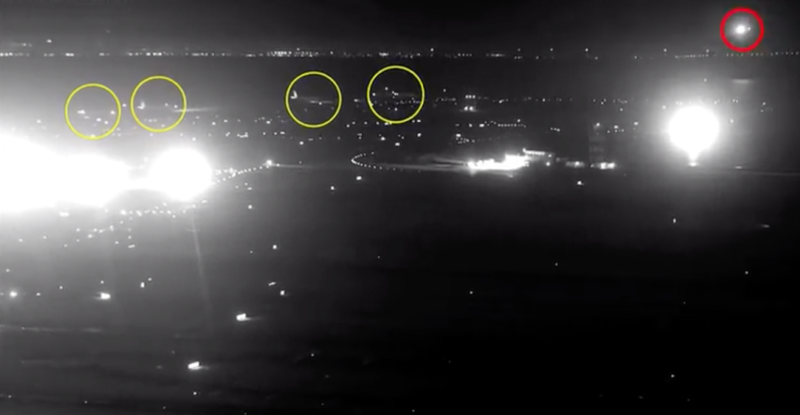The vice chairman of the US National Transportation Safety Board, Bruce Landsberg, has published a commentary on the NTSB’s blog on the human factors and systemic failures which led to the near-miss collision on 7 July 2017 between an Air Canada A320, inbound from Toronto, and four other aircraft awaiting takeoff at San Francisco International Airport.
Landsberg suggests that the events, which occurred near midnight, had the potential to be twice as deadly as the 27 March 1977 collision between two Boeing 747s on the runway in Tenerife; an incident which killed 583 people and remains the deadliest crash in aviation history.
In the Air Canada incident, disaster was averted by 13 feet, when pilots realized their error and aborted landing, but it was a very close call.
Landsberg is careful in his analysis not to lay blame on the pilots, but rather looks at the human factors and systemic failures which contributed to this high-risk situation.
Unlike the Tenerife tragedy, which was caused in part by heavy fog affecting visibility, weather was not a factor on 7 July 2017. Landsberg describes the night as “clear and calm, with no weather to obscure the visual approach to Runway 28 Right”.
The problem was that the Air Canada pilots did not realize the parallel runway (28 Left) was closed, and lined up for landing on a nearby taxiway instead of their assigned runway.
The Air Canada crew recognized their error in the nick of time and aborted landing just as the tower controller was ordering them to go around.
The NTSB investigation was hampered somewhat by what happened next. The captain, exhausted, did not notify the Air Canada dispatcher of the incident before going to bed. At that point, he had been awake for 19 hours.
“The captain was not technically ‘on duty’ that whole time, and, under Canadian regulations for reserve crew members, he still could have been available for duty for another 9 hours,” Landsberg says. “If we expect solid human performance where lives are at stake, fatigue rules need to be based on human factors science. The NTSB has recommended that Canada’s fatigue regulations be modified.”
When the captain filed his report 16 hours later, the aircraft had already taken off on a morning flight. The 2-hours of cockpit voice recorder (CVR) data was overwritten.
Recommendations from the NTSB report are based on what investigators could deduce from the evidence available.
One is that the FAA revise the format of NOTAMs (Notices to Airmen), something which the agency was originally tasked with doing in 2012.
“NOTAMs contain dozens of notices of varying importance, such as closed taxiways, wet runways, and small, unlit towers miles from the airport. Information about closed runways, however, is critical,” Landsberg states. “From a human factors perspective, we found that the presentation of information in the NOTAM the crew received did not effectively convey the information about the runway closure. This Air Canada crew missed two warnings about the closed runway at SFO, first in predeparture, and then via datalink before landing. Had they been aware of the closure, the pilots almost certainly would’ve suspected an unusual airport configuration with changed lighting patterns.”
Landsberg suggests that changing the language and formatting of NOTAMs is a critical priority. “The incident at SFO makes it clear that there is still much more work to be done. This is a safety issue that calls for urgent action,” he says.
Addressing the loss of CVR data to aid the investigation, Landsberg suggests that the aviation industry act on a previous recommendation, dating back to 2000, which would call for flight deck image recording. Aviation is the only form of transport that doesn’t use video recordings, because pilots have expressed workplace privacy concerns.
“For employees in safety-critical positions, privacy should take a backseat to human life,” Landsberg says. He adds that, unlike written transcripts of CVR and radio communications with the tower which are in the public domain, video recordings are protected by law from being released.
“Fortunately, we’ll get another chance to put some fixes in place to make a highly improbable event even less likely to recur. Let’s not squander it,” Landsberg concludes.
Related Articles:
- NTSB highlights FAA failures in “too close for comfort” AA383 evac
- After SWA 1380, is it time for deep human factors study of emergencies?
- Op-Ed: Four years after MH370, a new era in safety is on the horizon
- EASA safety report highlights worrying increase in serious incidents
- Lufthansa Systems makes the case for better flight management with IFC
- Rockwell Collins anticipates diversity of aircraft pipes, including HF
- Efforts advance to route aircraft data over most efficient pipes
- Satellite operator Intelsat sees business opportunity in the cockpit
- Panasonic Weather Solutions receives soft landing with FLYHT
- Podcast Episode 29: Political race as Metrojet probe continues











